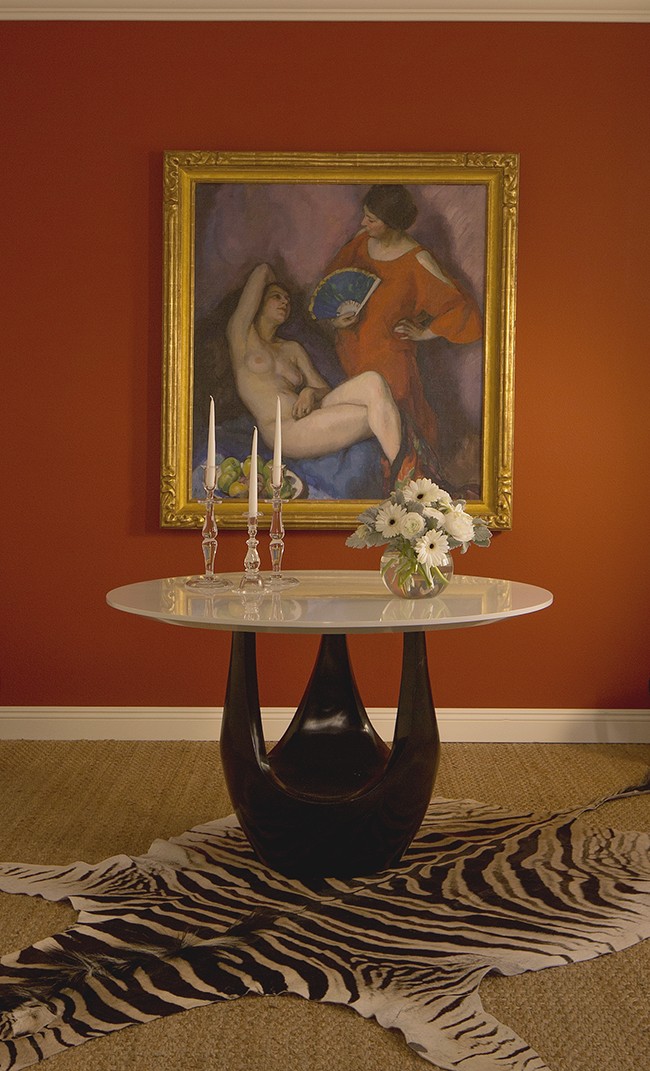Considered a Modernist, Edouard Vysekal was born in Czechoslovakia in 1890 and immigrated to the United States as a teenager to join his father in St. Paul, MN. He then moved to Chicago to attend the Art Institute of Chicago (my Alma Mater) and consequently, taught there until 1914. After Chicago, he and his wife, Luvena, moved to their final destination, Los Angeles, CA. Once there, they became thoroughly involved with the local art community, and how could you not? But at the time the Vysekals were in Los Angeles, it’s art community was a conservative one; they were viewed as modern artists and introduced the community to a more avant-garde aesthetic. Vysekal was especially adept at painting figures and this particular painting, “Costume, Life and Still Life”, executed in 1922, shows the looser brushstroke that he adapted after he moved to California.

This oil on panel piece contains deep, vibrant, saturated colors; to compliment them and highlight the orange/red color of the woman’s dress, I opted to use Dunn Edwards DEA154 Red Revival on the walls in this entry vignette. The flooring, Jute wall to wall carpeting, was used as a neutral backdrop to a dramatic Zebra skin rug and the red wall color. There are feminine curves and shapes that repeat one another in the lines of the modern cast bronze table, the 19th century antique side chairs, and the Steuben’s teardrop crystal candle holders, and of course, take their cue from the artwork’s subject matter. (As a side note, the Annenberg Estate in Rancho Mirage just opened to the public their private collection of Steuben crystal). The cast bronze “Ulu Table” gets its name from the Ulu knives or “Woman’s Knife” used by the arctic tribes as an all-purpose tool. The 19th century antique side chairs are hand-carved and have the original needle-point embroidered tapestry seats. The candle holders are vintage Steuben’s crystal. And the overall effect creates a dramatic and sexy yet refined and elegant entry.





